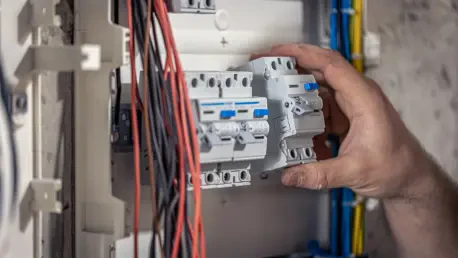I’m thrilled to sit down with Christopher Hailstone, a renowned expert in energy management and renewable energy, to discuss the urgent push for clean energy adoption in American homes. With a deep background in electricity delivery and grid reliability, Christopher offers invaluable insights into how federal incentives and innovative campaigns are shaping the future of residential energy. Today, we’ll dive into the details of a national effort to promote energy-efficient upgrades, the impact of expiring tax credits, and the broader implications for homeowners facing rising energy costs. Our conversation will explore the challenges of spreading awareness, the benefits for families, and what lies ahead for clean energy trends.
Can you walk us through the goals of the recent national campaign focused on better appliances and clean energy upgrades for homeowners?
Absolutely, Emilia. The “Save on Better Appliances” campaign, spearheaded by Rewiring America, is all about empowering homeowners to make energy-efficient upgrades before critical federal incentives disappear. The primary goal is to help families save on energy bills by adopting appliances like heat pumps, solar panels, and efficient HVAC systems. It’s not just about cost savings, though—it’s also about reducing household carbon footprints and promoting sustainable living. The campaign provides a short window of opportunity to capitalize on these benefits, and it’s designed to make the transition as seamless as possible for homeowners.
How are you ensuring that people across the country are aware of these soon-to-expire tax credits?
We’re pulling out all the stops to spread the word. This involves a multi-pronged approach—digital outreach through social media and targeted ads, partnerships with local leaders and climate-focused networks, and even direct community engagement in key areas. We’re working with mayors and governors to amplify the message, ensuring it reaches diverse audiences. The urgency of the deadline means we’re also leveraging press releases and public statements to create a buzz, emphasizing that now is the time to act before these opportunities slip away.
What specific tools or support are available to help homeowners navigate these incentives and make upgrades?
We’ve developed a suite of resources to simplify the process. There’s a planning tool on the Rewiring America website that helps homeowners assess their eligibility for tax credits and map out potential upgrades. We also offer step-by-step guidance on installing new appliances or energy systems, connecting people with trusted contractors. On top of that, we’ve curated information on the tax credits themselves, breaking down complex jargon into actionable steps so families can confidently claim their savings.
Why is there such a pressing need to act on these federal energy tax credits right now?
The urgency comes down to a hard deadline at the end of this year. Two key federal tax credits, known as 25D and 25C, are set to expire due to recent legislative changes. These credits have been a lifeline for many, covering significant costs for clean energy installations and efficiency improvements. Missing this window means losing out on substantial financial support, and with energy costs climbing, that’s a hit many families can’t afford to take. The clock is ticking, and we’re racing to ensure no one is left behind.
Can you break down what these tax credits actually cover for homeowners looking to make changes?
Of course. The 25D credit offers a 30% tax break on the cost of installing clean energy systems like solar panels and battery storage. It’s a fantastic incentive for anyone looking to harness renewable energy at home. The 25C credit, on the other hand, focuses on energy efficiency upgrades—think new windows, better insulation, doors, and HVAC systems that cut down on energy waste. Together, these credits tackle both generation and conservation, making homes more sustainable and affordable to run.
How do these incentives make a real difference for American families, especially with energy bills on the rise?
These tax credits are a game-changer for families struggling with high energy costs. By offsetting 30% of the upfront cost for something like solar panels or a heat pump, they make these upgrades accessible to a wider range of households. For example, a family spending $5,000 on a heat pump could save $1,500 through the credit, plus hundreds more annually on their bills due to lower energy use. Beyond the dollars and cents, it’s about peace of mind—knowing your home is more efficient and you’re contributing to a cleaner environment.
Are there particular communities or areas where these savings could have an even bigger impact?
Definitely. Low- and middle-income families stand to gain the most, as energy bills often eat up a larger share of their budget. Regions with extreme weather—think harsh winters in the Northeast or scorching summers in the Southwest—also see outsized benefits because efficient systems like heat pumps can drastically cut heating and cooling costs. Rural areas, where energy infrastructure might be less reliable, can also benefit from solar and battery setups that provide independence from the grid. Tailoring outreach to these groups is a priority for us.
What are some of the biggest hurdles in getting the message out about these expiring credits?
One major challenge is simply time—there’s so little of it left to reach everyone. Another hurdle is awareness; many homeowners don’t even know these credits exist or how to claim them. There’s also a fair bit of confusion around eligibility and the process itself, which can discourage people from taking action. We’re combating this with clear, accessible information, but it’s an uphill battle to cut through the noise and ensure the message sticks before the year ends.
Despite the end of federal support, there’s optimism about the continued popularity of heat pumps. What’s driving that trend in your view?
I’m optimistic too, Emilia. Heat pumps have been outselling gas furnaces for a few years now, and that momentum isn’t just tied to federal incentives. Manufacturers are stepping up, making units more affordable and easier to install, especially for retrofitting older homes. The energy efficiency of heat pumps is also a huge draw—they can slash bills while providing both heating and cooling. Plus, growing public awareness about climate change is pushing more families to choose sustainable options, even without a tax break.
Looking ahead, what is your forecast for the future of clean energy adoption in American homes?
I believe we’re on the cusp of a major shift. Even with federal incentives winding down, the market for clean energy solutions like heat pumps and solar is maturing. Costs are coming down, technology is improving, and consumer demand is rising as people see the long-term value. I expect state and local programs to fill some of the gaps left by federal policy, and innovation from the private sector will keep driving adoption. The next decade could see a real transformation in how we power our homes, making clean energy the norm rather than the exception.









